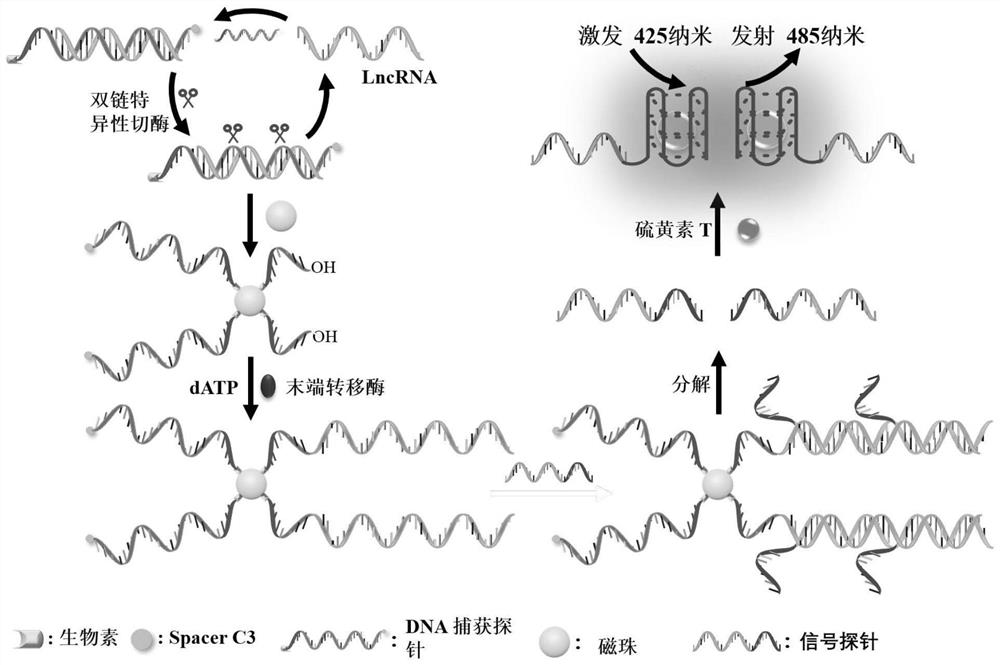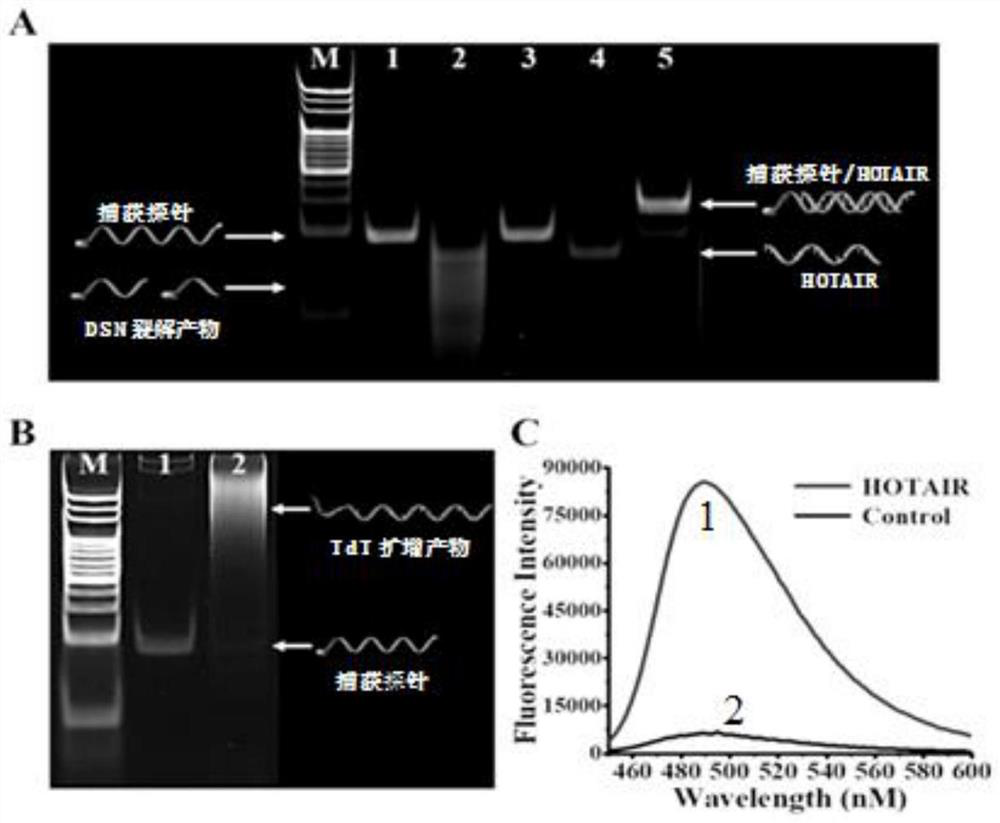Telomere G quadruplex DNA (deoxyribonucleic acid) and thioflavin T mediated fluorescent biosensor and application thereof in lncRNA (long non-coding ribonucleic acid) detection
A biosensor and quadruplex technology, applied in the field of fluorescence detection, can solve the problems of expensive instruments, inability to directly detect lncRNA, incomplete self-quenching, etc., and achieve the effect of improving sensitivity and specificity
- Summary
- Abstract
- Description
- Claims
- Application Information
AI Technical Summary
Problems solved by technology
Method used
Image
Examples
Embodiment
[0068] experimental method
[0069] 1. Double-strand specific nuclease (duplex-specific nuclease, DSN) activates terminal transferase (terminal transferase, TdT) amplification on the surface of magnetic beads:
[0070] Add different concentrations of HOX gene antisense intergenic RNA (HOX gene antisense intergenic RNA, HOTAIR) into the main buffer containing 1 × double-strand specific nuclease (5 mmol per liter of magnesium chloride, 1 mmol per liter of dithiothreose alcohol, 50 millimolar tris-hydrochloric acid, pH 8.0), 100 nanomolar HOX gene antisense intergenic RNA capture probe, 20 units RNase inhibitor, and 0.2 unit double-stranded specific nucleic acid enzyme solution (20 μl) and incubate at 55°C for 1 hour. Subsequently, 1.25 μl of magnetic beads (12.5 μg) were incubated with 20 μl of double-strand-specific nuclease cleavage product for 30 minutes. To remove unbound product, the reaction solution was subjected to magnetic separation, then washed 5 times with 1× wash ...
PUM
 Login to View More
Login to View More Abstract
Description
Claims
Application Information
 Login to View More
Login to View More - R&D
- Intellectual Property
- Life Sciences
- Materials
- Tech Scout
- Unparalleled Data Quality
- Higher Quality Content
- 60% Fewer Hallucinations
Browse by: Latest US Patents, China's latest patents, Technical Efficacy Thesaurus, Application Domain, Technology Topic, Popular Technical Reports.
© 2025 PatSnap. All rights reserved.Legal|Privacy policy|Modern Slavery Act Transparency Statement|Sitemap|About US| Contact US: help@patsnap.com



